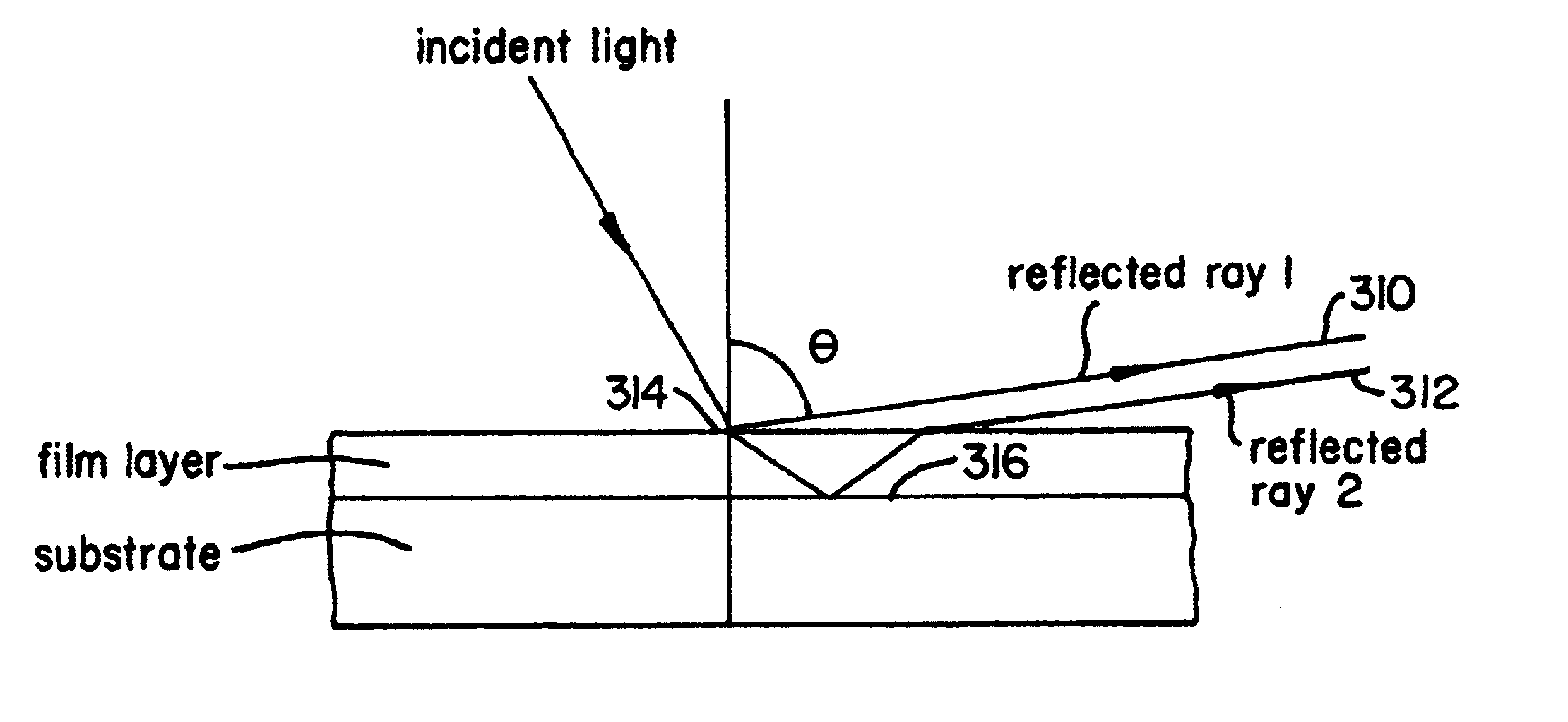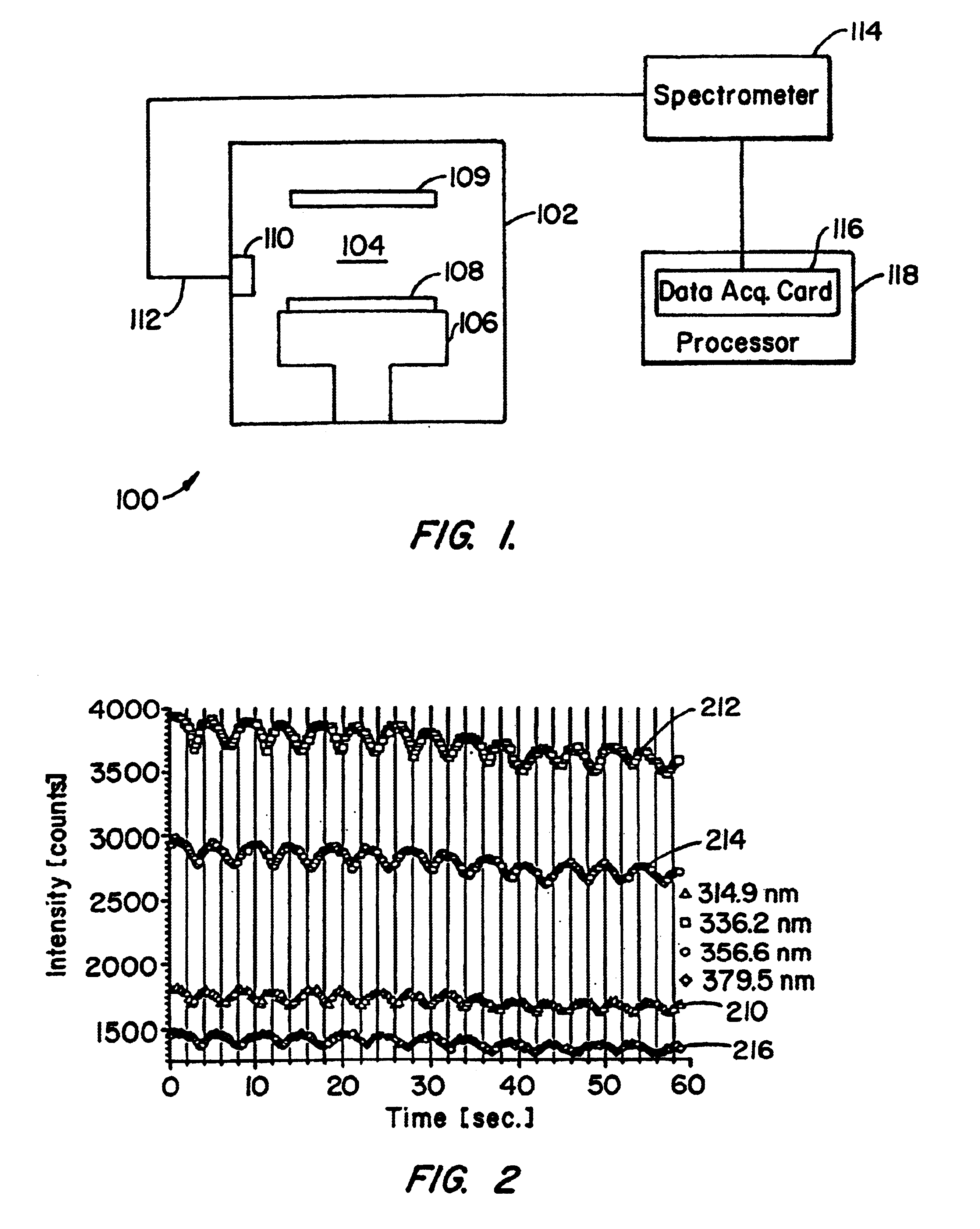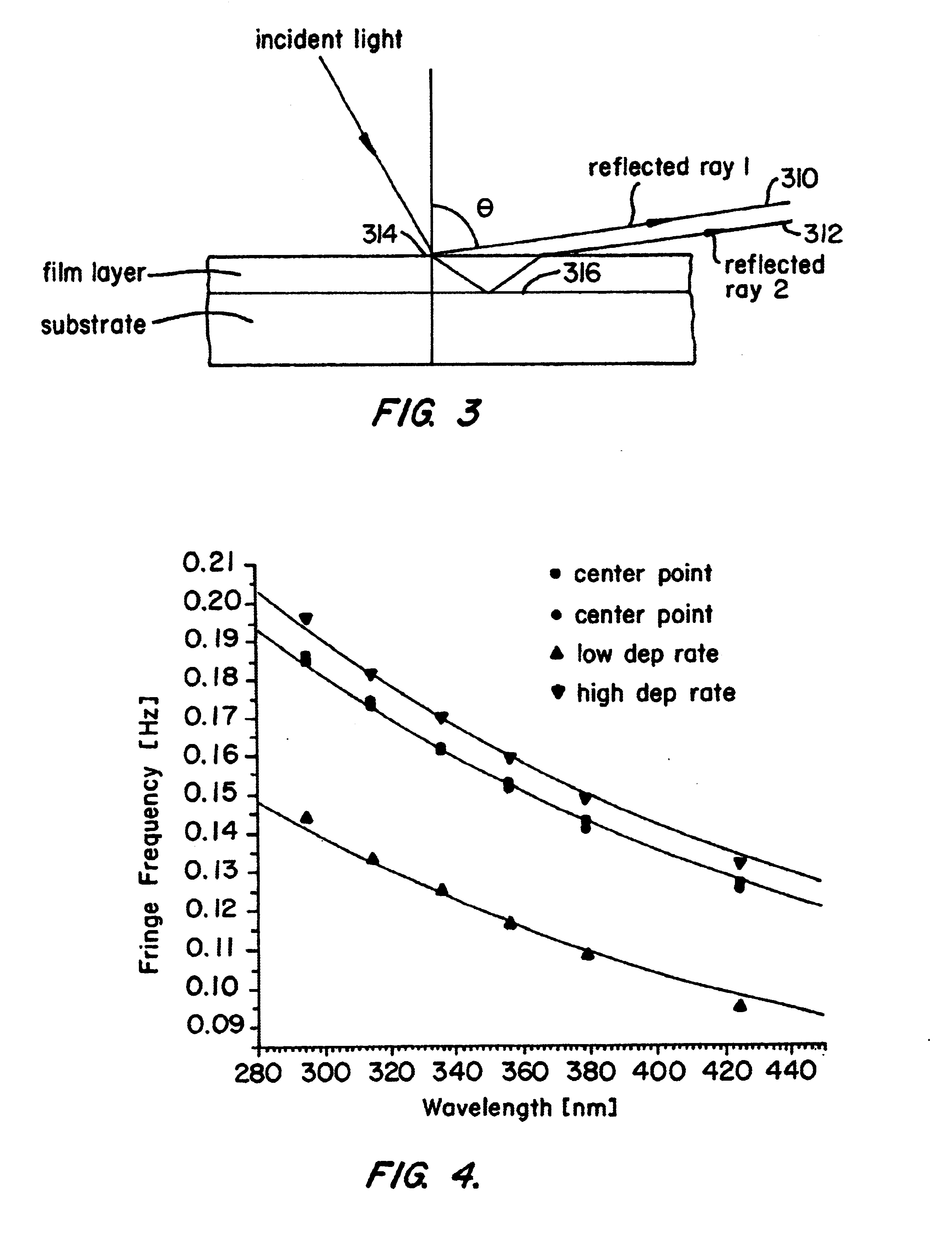In-situ film thickness measurement using spectral interference at grazing incidence
a grazing incidence and in-situ film technology, applied in the field of wafer processing, can solve the problems of non-optimal or undesirable properties of layers, inability to provide information regarding periodic process quality assessment methods, and substantial waste, so as to improve the signal-to-noise ratio and reduce the cost
- Summary
- Abstract
- Description
- Claims
- Application Information
AI Technical Summary
Benefits of technology
Problems solved by technology
Method used
Image
Examples
Embodiment Construction
I. An Exemplary Plasma Enhanced Chemical Vapor Deposition (PECVD) Chamber Configured to Practice the Present Invention
[0022]The method of the present invention can be used with any standard plasma deposition chamber that includes a side-view window or side-viewport through which plasma emissions reflected off the surface of the wafer can be directed to a light detection and analysis device. In one embodiment, the light detection device can be a spectrometer. FIG. 1 is a simplified cross-sectional view of an exemplary PECVD chamber 100 configured to practice the method of the present invention. As shown in FIG. 1, PECVD chamber 100 includes a housing 102 that surrounds a substrate processing region 104. During a deposition process a substrate 108 is supported on a pedestal 106 and exposed to a plasma formed in region 104. The plasma generates electromagnetic radiation that includes emissions having wavelengths in the optical spectrum (i.e., from 200 nm to 900 nm). A portion of these ...
PUM
 Login to View More
Login to View More Abstract
Description
Claims
Application Information
 Login to View More
Login to View More - R&D
- Intellectual Property
- Life Sciences
- Materials
- Tech Scout
- Unparalleled Data Quality
- Higher Quality Content
- 60% Fewer Hallucinations
Browse by: Latest US Patents, China's latest patents, Technical Efficacy Thesaurus, Application Domain, Technology Topic, Popular Technical Reports.
© 2025 PatSnap. All rights reserved.Legal|Privacy policy|Modern Slavery Act Transparency Statement|Sitemap|About US| Contact US: help@patsnap.com



